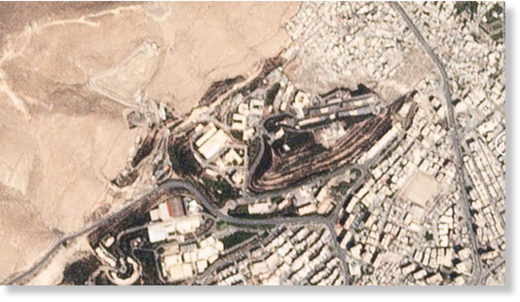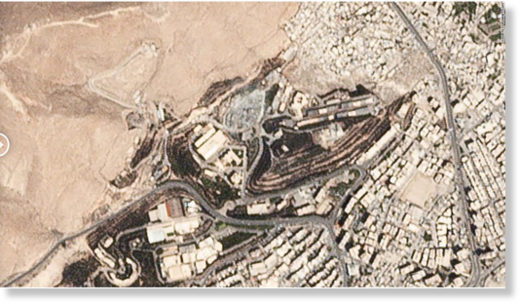Throughout the 20th century, the US ability to project power and dominate global geopolitics was, to a large extent, based on the general perception that the US was the most powerful military force in the world. In most cases, the mere threat of this military prowess was enough to 'get things done' the American, or Western, way. The maintenance of the widespread belief in US military preeminence is therefore extremely important to the US establishment, and any event that might expose a different reality is to be avoided at all costs. When US/Western military might is physically demonstrated, a careful propaganda campaign and media management of the outcome is necessary, up to and including outright lies about the performance of the military tech used. No surprise there.
In the first 1990 Gulf War, for example, the performance of US Patriot missiles in shooting down Iraqi Scud missiles fired at Israel, Saudi Arabia and Kuwait was lauded by Western powers and the media. A 95% success rate was claimed at the time, with then President
George Bush claiming that the Patriot's record was "near perfect". Over the following year however, the US Army lowered this estimate to 79% over Saudi Arabian skies and 40% over Israel. A later report by the General Accounting Office concluded that Patriot missiles destroyed only 9% of the Scuds they attempted to engage.
The Israeli Defense Force calculated the hit rate at just 2%. On the night of Jan. 25, 1991 in Tel Aviv, three Patriots that were fired into the air fell back to earth and exploded. Two of them hit residential areas and the
Israeli newspaper Ma'ariv reported at the time that one Israeli was killed, 44 were wounded, and 4,156 apartments were destroyed. That incident and a few others like it led Ted Postol, an MIT weapons scientist, to testify before a congressional committee that,
"it is possible that if we had not attempted to defend against Scuds, the level of resulting damage would be no worse than actually occurred." In a documentary aired on Israeli television in 1993, Moshe Arens, who was Israel's Defense Minister in the Gulf War, Gen. Dan Shomron, who was chief of staff of the Israel Defense Force during the war, and Haim Asa, a member of an Israeli technical team that worked with Patriots during the war, all dismissed the Patriot anti-missile system. General Shomron
described accounts of the Patriot's success as "a myth." Mr. Asa called them "a joke." All concurred with a 1991 report by the Israeli Air Force, which concluded that
"there is no evidence of even a single successful intercept" although there is "circumstantial evidence for one possible intercept." The point being, the US has a track record of lying about the effectiveness of its missiles.
After 100+ cruise missiles or cruise missile variants were fired at targets in Syria early in the morning of April 14th, President Trump declared "mission accomplished" and tweeted that it was "a perfectly executed strike." Pentagon officials
said that none of the 105 allied missiles fired were hit by Syria's Soviet-era anti-missile ground systems, that the raids were "precise and overwhelming," and Syrian air defences remained "largely ineffective."
An important point that seems to have gotten lost in the media propaganda offensive is that
only 3 locations were targeted and hit. Or, at least, that's the official story. Lieutenant-General Kenneth F. McKenzie told reporters on Saturday that the prime target of the operation was the Barzeh Research and Development Center in the greater Damascus area.
A total of 76 missiles, including 57 Tomahawk missiles, were fired at the facility, he said. He also said that 22 missiles were fired against a 'chemical weapons storage facility' near Homs, and some seven missiles at another 'chemical weapons bunker' in the same area.
Chairman of the Joint Chiefs of Staff, General Joseph Dunford,
confirmed that only those three targets were hit, including the Barzeh 'scientific research centre' in the greater Damascus area, which he claimed was used for research,
development, production and testing of chemical weapons, a facility
just west of Homs which the US claimed was a centre for sarin gas production, and a command post located near the first facility.
The Barzeh 'scientific research center' isn't really a 'scientific research center'. First and foremost, it is a University called the 'Higher Institute for Applied Science and Technology' (HIAST):
"HIAST was established in 1983. Its aim is to qualify personnel in order to conduct scientific and technological research in all applied sciences and technology fields, so they can participate in the scientific and economic process in Syria. HIAST provides opportunities to make progress in applied research fields by joining courses to be awarded the degree of engineering Diploma, Master and Doctorate."
You can
check out their website.
As part of their 'reporting' on the US government claim that this university housed a "chemical weapons facility", the media reproduced satellite images showing the target area before and after the missile strike. These images were provided to the media by the US government.

HIAST campus before

HIAST Campus after
Maybe grainy satellite images are preferred by the media because it affords a measure of mystique and distance between the reader and the reality of what they are looking at, but I can't understand why Western media hacks didn't just go to Google Maps and check the HIAST campus out themselves.
Below is an image of the general area of the HIAST campus from Google Maps, where you can see that it's located on the outer edge of the Barzeh district of Damascus. The "chemical weapons lab", part of the campus that was targeted by US missiles, is circled in red.
And here's a video of a bunch of people hanging out around the ruins of the "chemical weapons buildings" 24 hours after the alleged chemical weapons were hit with 76 cruise missiles.
Note that there is not a hazmat suit in sight...